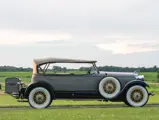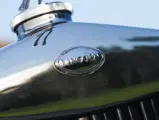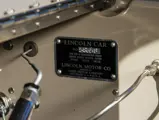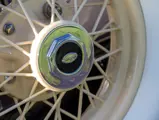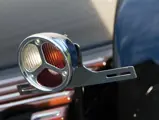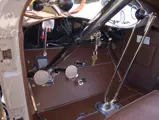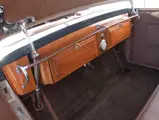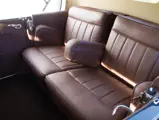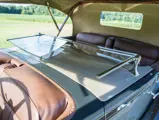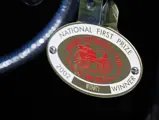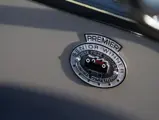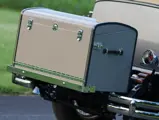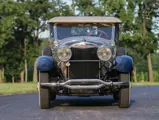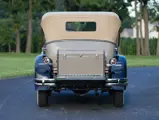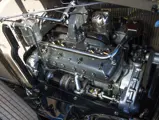Style 163B. 90 bhp, 384.8 cu. in. L-head V-8 engine, three-speed manual transmission, solid front axle with semi-elliptic leaf springs, live rear axle with semi-elliptic leaf springs, and four-wheel mechanical brakes. Wheelbase: 136 in.
Lincoln was Henry Martyn Leland’s second automobile company, and it was formed after he left Cadillac in a dispute with General Motors President Billy Durant. The “Master of Precision,” as Leland was known, was Cadillac’s founder, and he remained its head after selling it to General Motors. Championing precision manufacture and interchangeable parts, Leland had changed the face of the motor industry. The Lincoln Motor Company was formed in 1917 to build Liberty aircraft engines for World War I. However, after the armistice, Lincoln’s government contracts were canceled and much of the workforce idled.
Leland’s solution to the problem was to re-enter a business he knew, such as manufacturing motor cars. The first Lincolns appeared in September 1920, to an enthusiastic reception by the press. A slow start to production, partly a result of Leland’s obsession with perfection, compounded by a nationwide recession, soon put Lincoln into receivership. Henry Ford came to the rescue, purchasing Lincoln Motor Company for eight million dollars in 1922. However, Leland’s relief was short lived. Within four months, he had a falling out with Ford and departed the automobile business for good.
Lincoln became the flagship of Ford’s empire, and its fortunes were largely entrusted to Henry’s son, Edsel. Lincoln’s sales were never immense, but its prestige was an asset, particularly after Edsel’s fine eye for design did away with the perpendicular Leland-era bodies. Edsel looked to coachbuilders for inspiration, and he enlisted such custom houses as Brunn, Judkins, Willoughby, Murphy, and Locke to provide bodies, with many of them appearing in Lincoln’s catalogues.
Locke & Co., established in New York City in 1902, grew up with the automobile industry. James Vinton Locke insisted on the highest standards of quality, and his company prospered, particularly after World War I. The firm was a distributor for the French marque Hotchkiss, which clothed such prestige chassis as Duesenberg, Rolls-Royce, Packard, and Pierce-Arrow. In 1926, an upstate factory was established at Rochester. The city facility was then dedicated to servicing and refinishing customer cars, while body production also took place upstate. With greater capacity, the company was able to supply such sufficient output that car manufacturers began to advertise them. Among the automakers offering Locke “catalogue customs” were Franklin, Marmon, Stutz, Chrysler, and Lincoln.
Locke bodies entered the Lincoln catalogue in 1926, appearing in roadster, convertible, town car, and landaulette styles. Locke tonneau-cowl sport phaeton bodies of style 163B were built for Lincoln from 1927 to 1929, with 298 built in all. This car, with the hinged cowl for the rear compartment, is one of just 58 built in the final year, before the model was canceled in favor of the Lincoln-built style 176B. It was purchased in 1966 by the owner’s father, who gave it a partial restoration, drove it often, and toured it extensively.
The current owner performed a complete restoration in 2000, enlisting specialists for paint and upholstery but completing much of the work himself. The aluminum body is medium grey with blue moldings and fenders, with the latter being pinstriped in straw to match the wire wheels. The interior is upholstered in medium brown, with matching carpet to the rear and correct brown linoleum on the front floor. A brown carpet for the front also accompanies the car. The ornate wind wings are etched with a floral pattern.
The top is tan canvas, and it comes with a matching boot and a complete set of side curtains. A capacious trunk is mounted at the rear, while spare tires are carried as dual side-mounts. Wide whitewall tires are fitted all around. The rear passenger compartment features exquisite locking wood cabinets under the tonneau cowl, with a door-activated courtesy light in the middle. When the car lights are illuminated, opening the doors causes lights on the splash aprons to shine on the running boards, easing entry and exit in the dark.
Although driven very little since the restoration, the car is well-equipped for the road and touring. It has been subtly fitted with modern turn signals, which have been integrated into the cowl lamps and tail lamps, for safety in today’s traffic, and an overdrive gives effortless cruising on modern highways.
The quality of the restoration has been underscored by an Antique Automobile Club of America National First Place Award, number W15671, which was earned at Hershey in 2002. It also won a Classic Car Club of America Senior Premier Award at an Auburn, Indiana, Grand Classic, where it was given medallion 2516 and judged 99.75 points.
Ready to show, tour, or simply give pleasure with its natural beauty, this handsome Locke-bodied Lincoln will be a welcome addition to any collection.
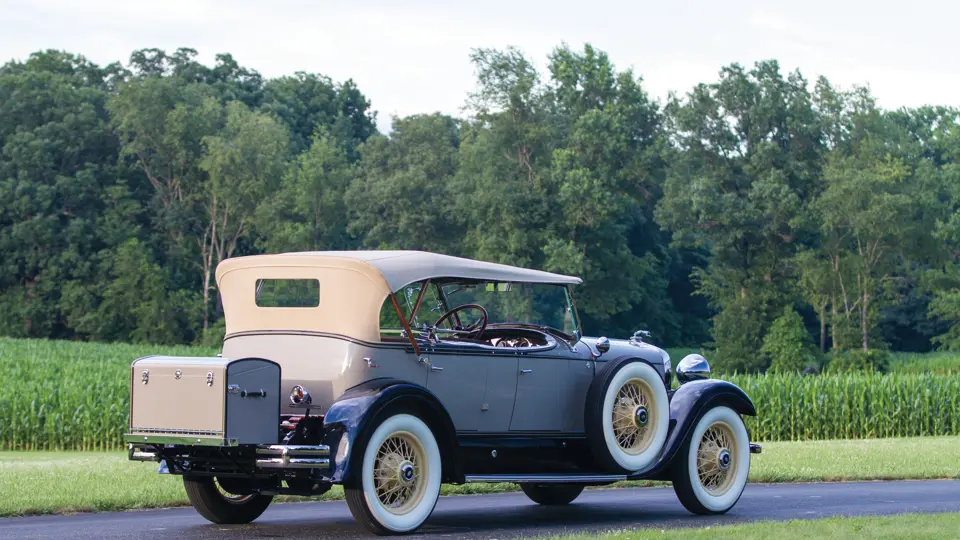




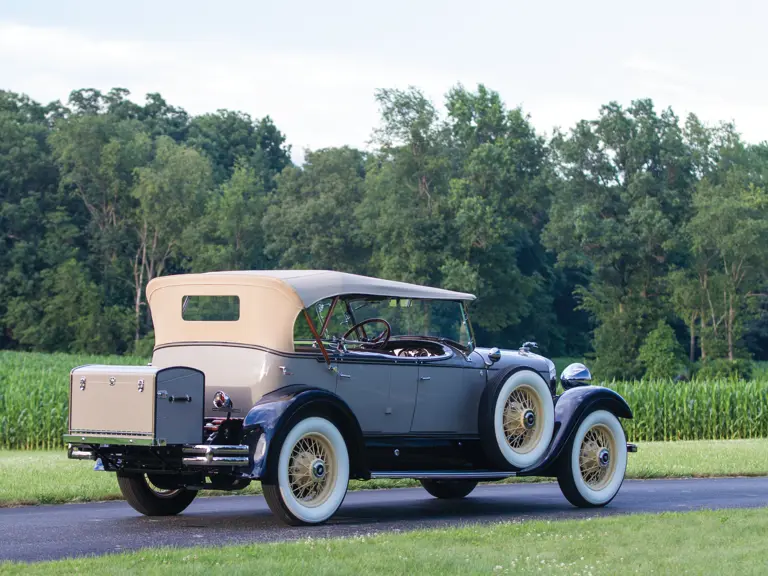
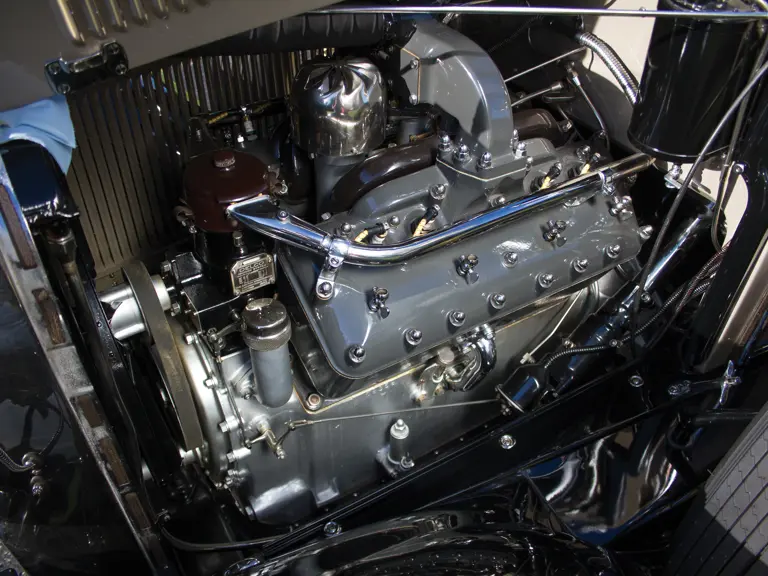
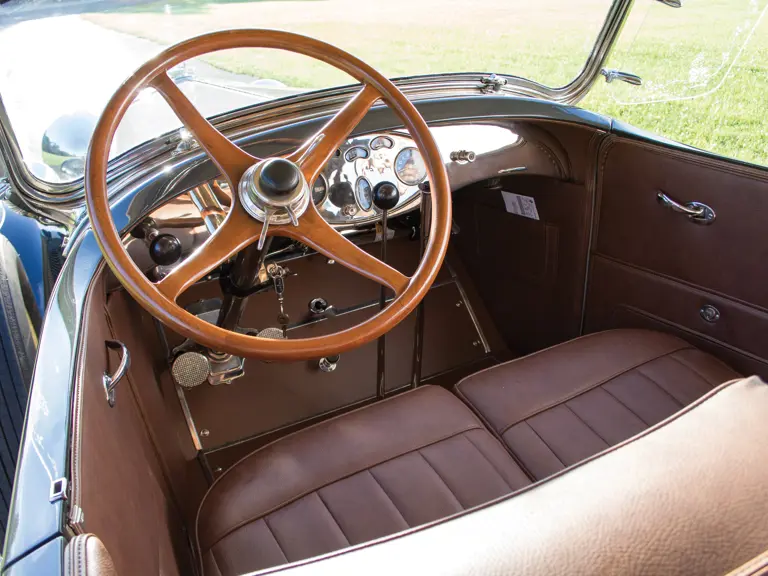


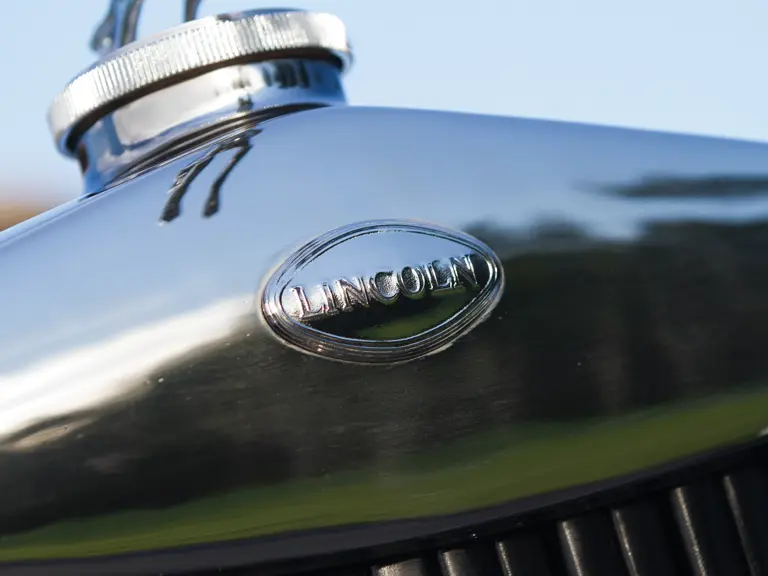

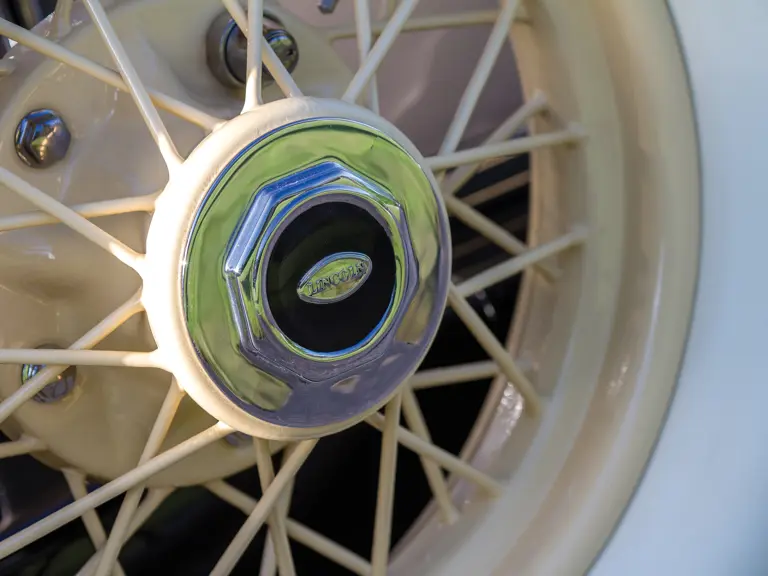

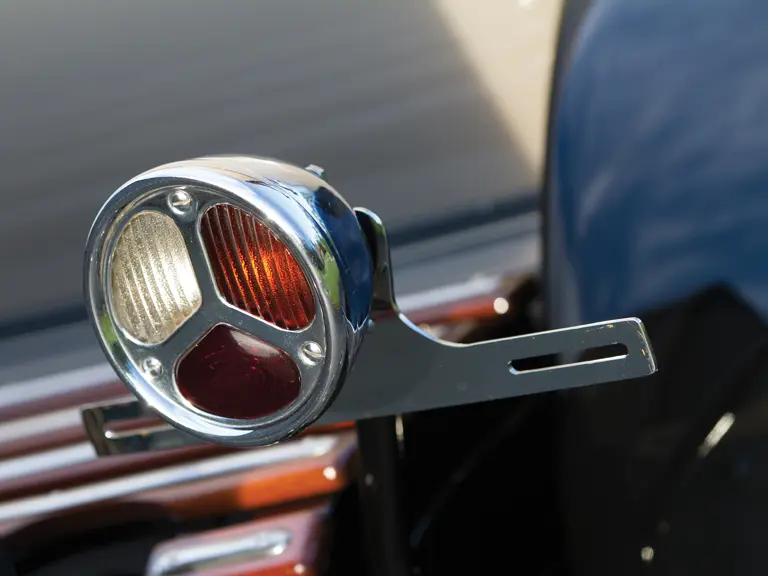

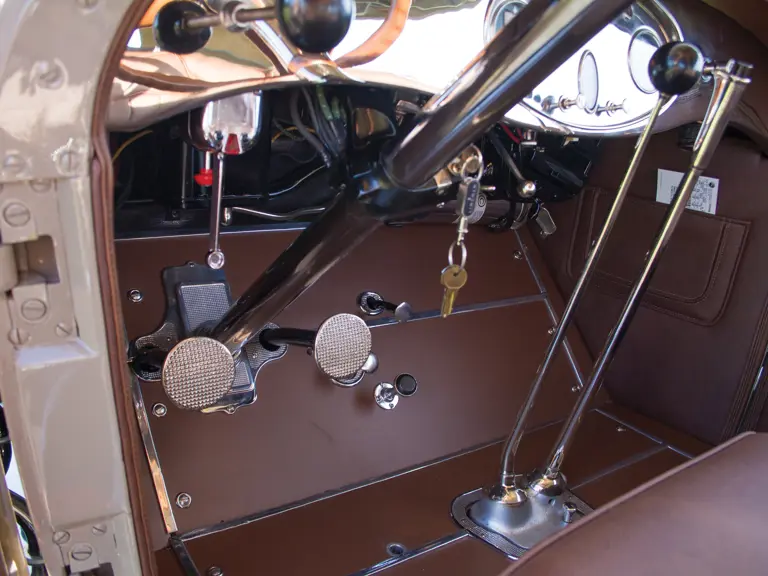
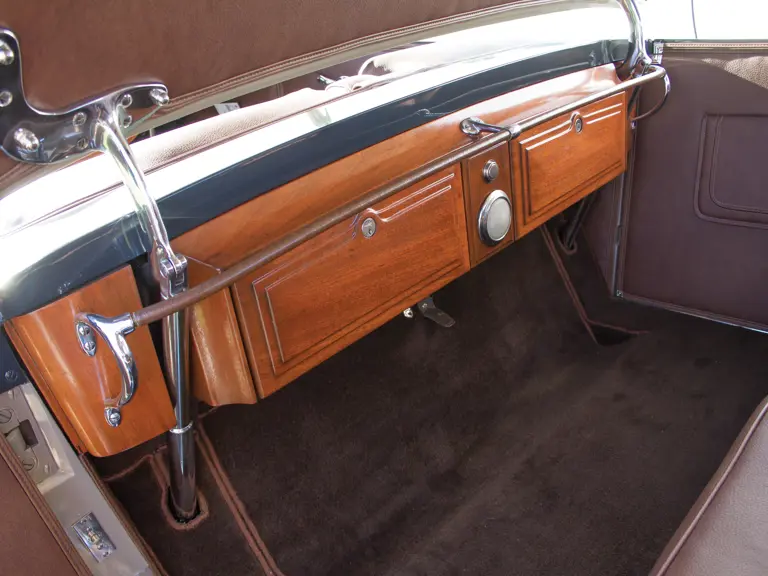
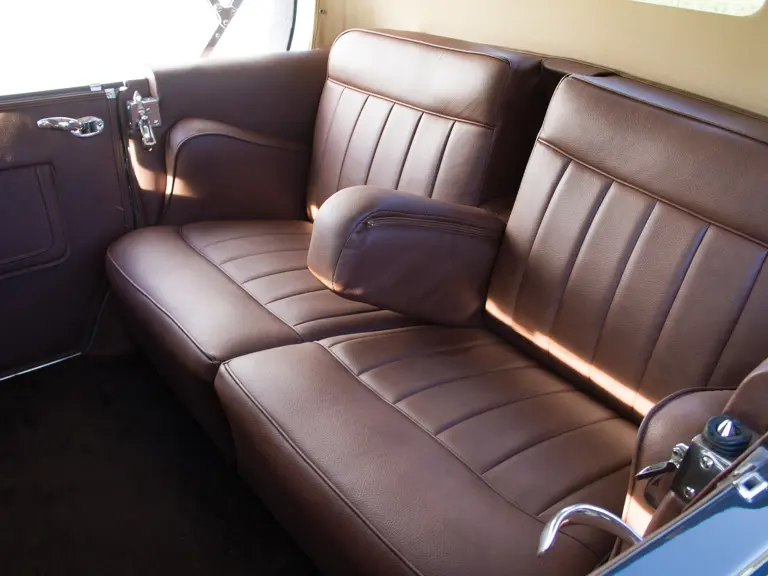
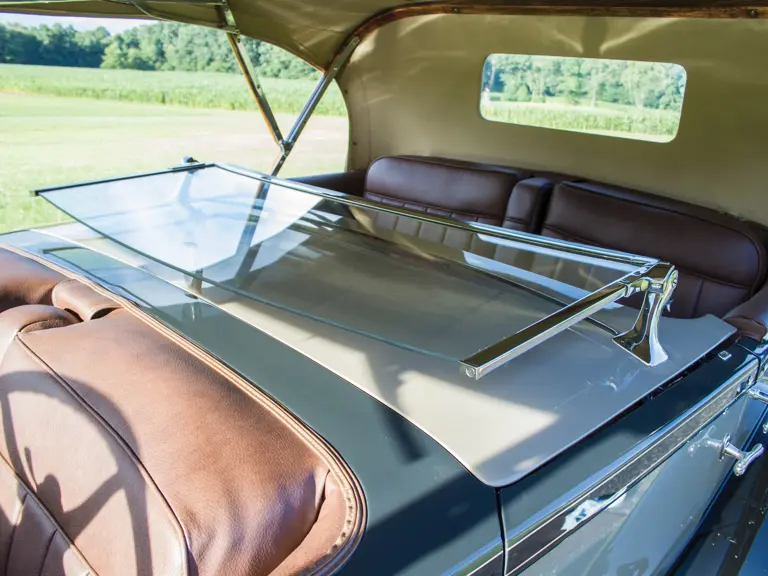
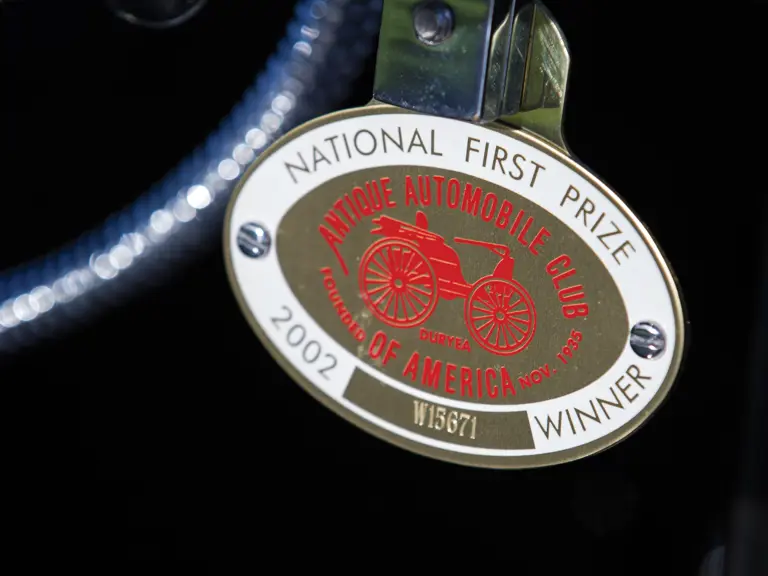
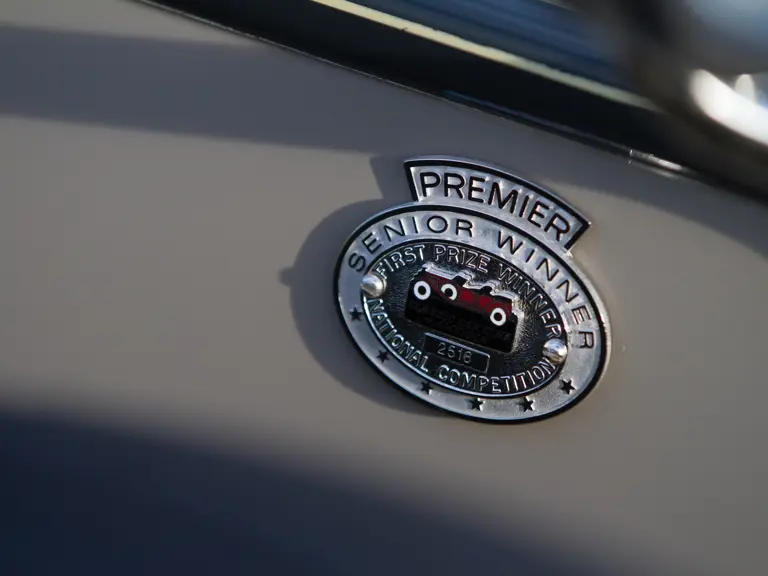
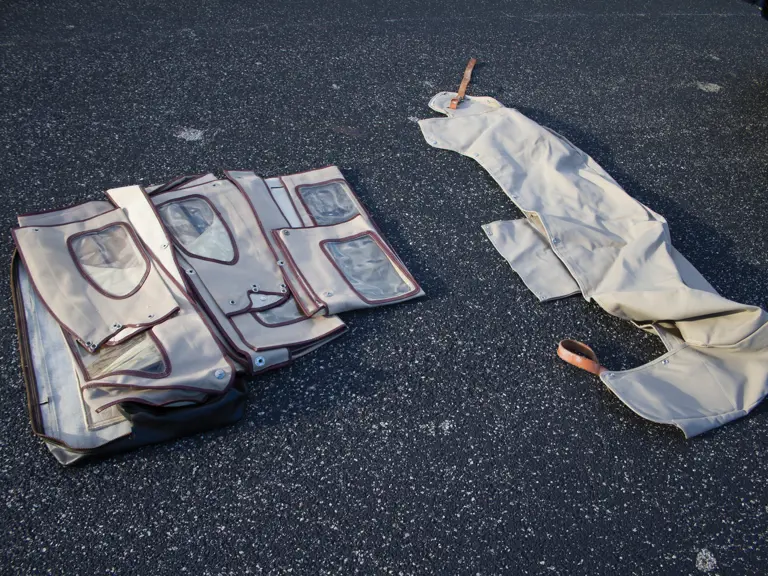


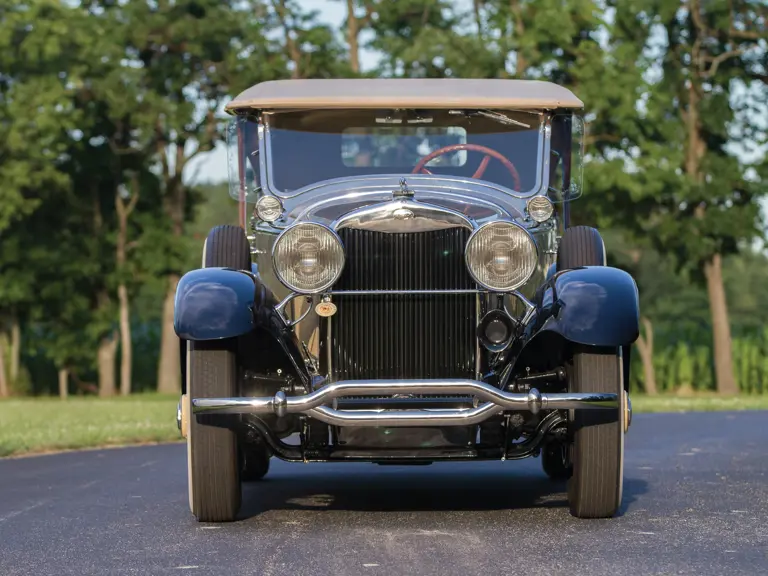
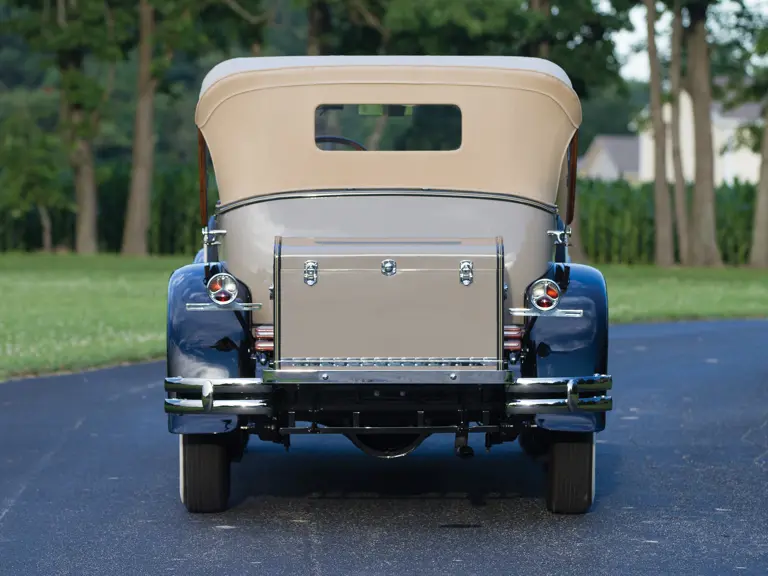

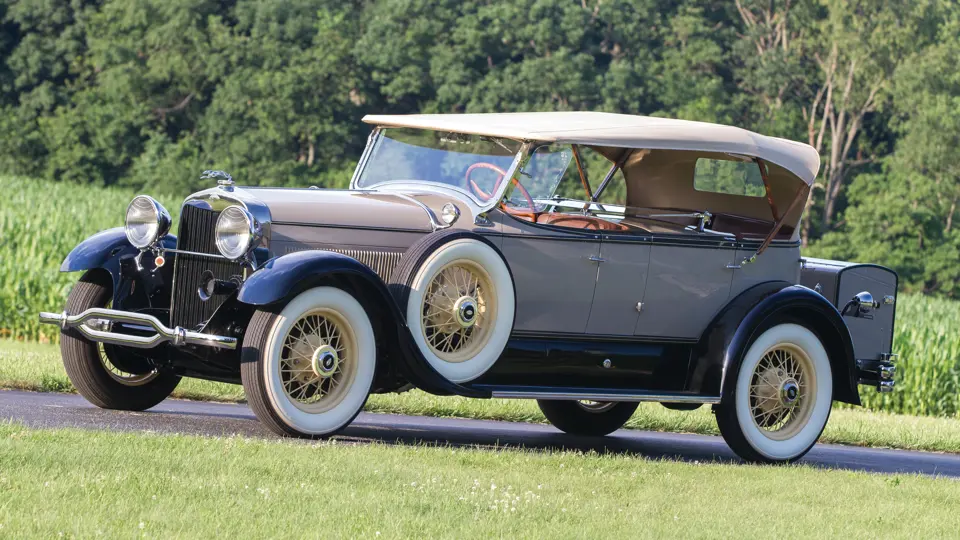
 | Hershey, Pennsylvania
| Hershey, Pennsylvania



